Abstract
The effects of temperature on rates of cellulose synthesis, respiration, and long-term glucose uptake were investigated using cultured cotton ovules (Gossypium hirsutum L. cv Acala SJ1). Ovules were cultured either at constant 34°C or under cycling temperatures (12 h at 34°C/12 h at 15-40°C). Rates of respiration and cellulose synthesis at various temperatures were determined on day 21 during the stage of secondary wall synthesis by feeding cultured ovules with [14C]glucose. Respiration increased between 18 and approximately 34°C, then remained constant up to 40°C. In contrast, the rate of cellulose synthesis increased above 18°C, reached a plateau between about 28 and 37°C, and then decreased at 40°C. Therefore, the optimum temperature for rapid and metabolically efficient cellulose synthesis in Acala SJ1 is near 28°C. In ovules cycled to 15°C, respiration recovered to the control rate immediately upon rewarming to 34°C, but the rate of cellulose synthesis did not fully recover for several hours. These data indicate that cellulose synthesis and respiration respond differently to cool temperatures. The long-term uptake of glucose, which is the carbon source in the culture medium, increased as the low temperature in the cycle increased between 15 and 28°C. However, glucose uptake did not increase in cultures grown constantly at 34°C compared to those cycled at 34/28°C. These observations are consistent with previous observations on the responses of fiber elongation and weight gain to cycling temperatures in vitro and in the field.
Full text
PDF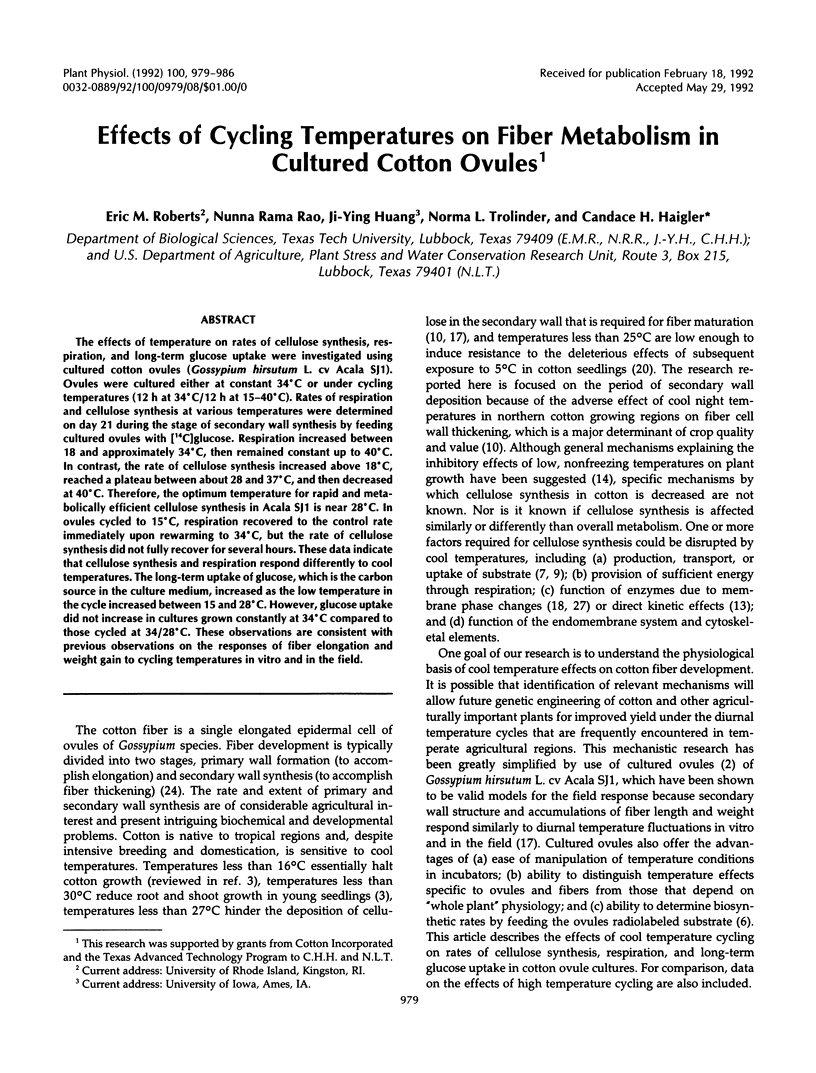
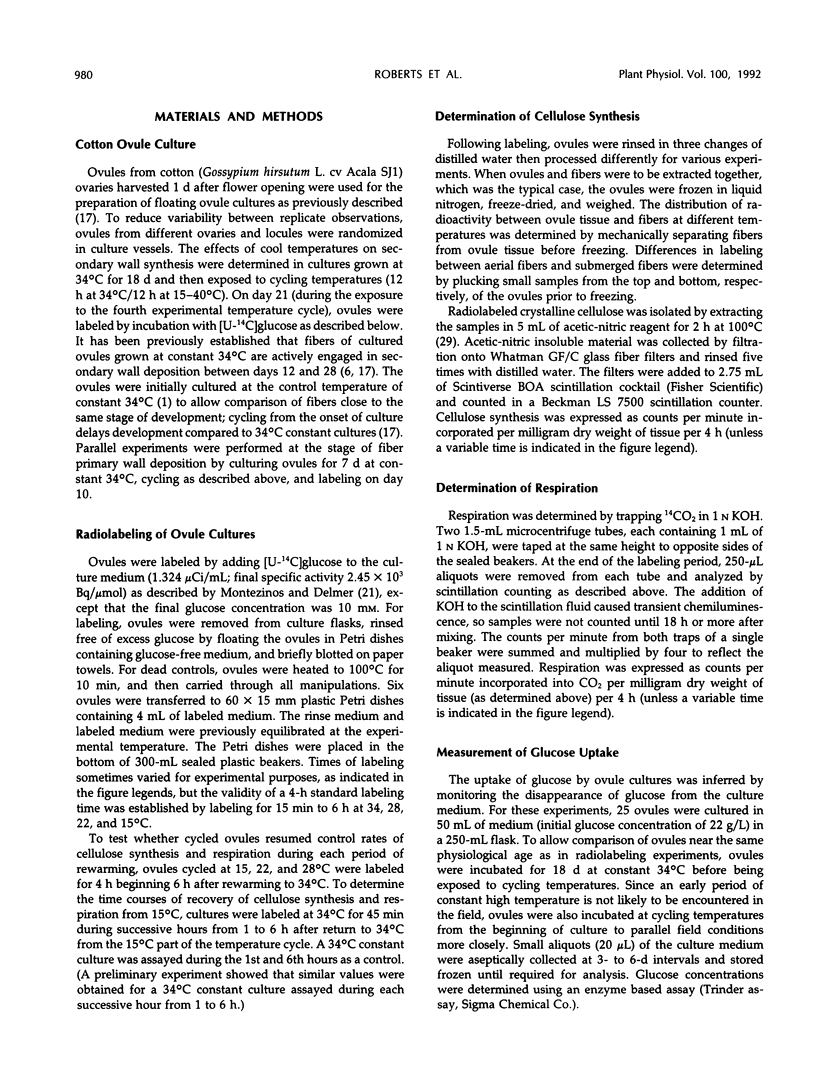
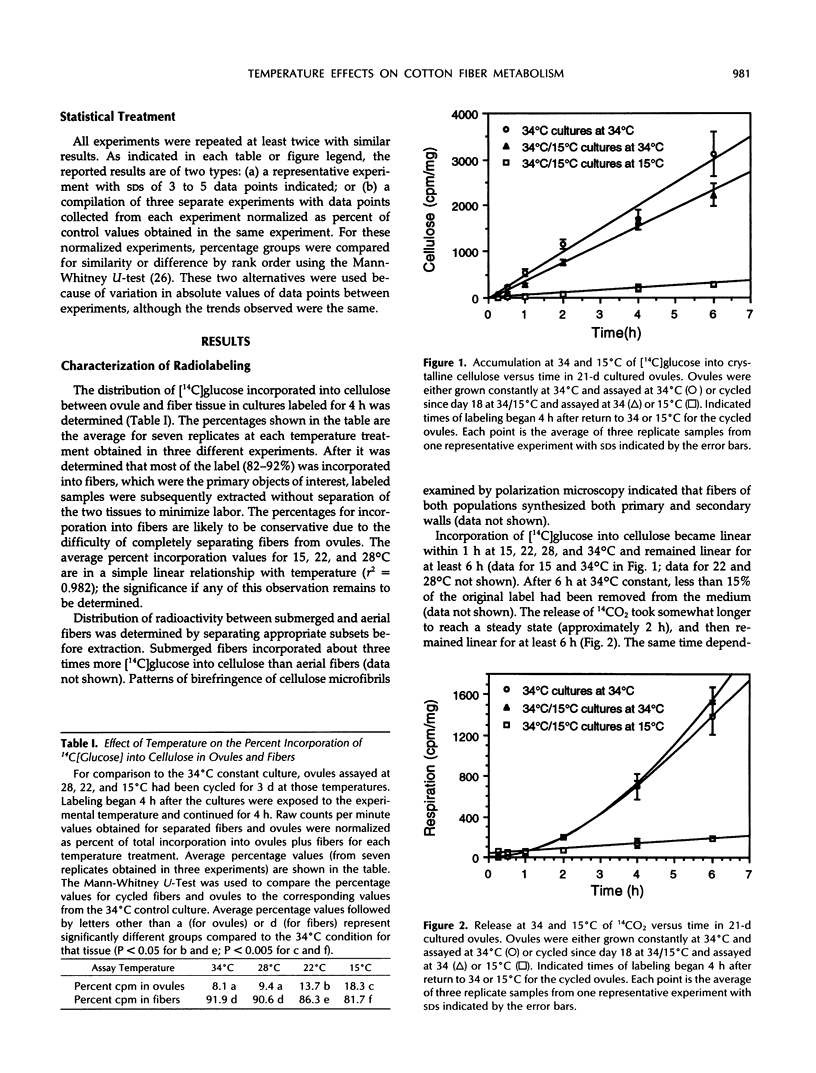
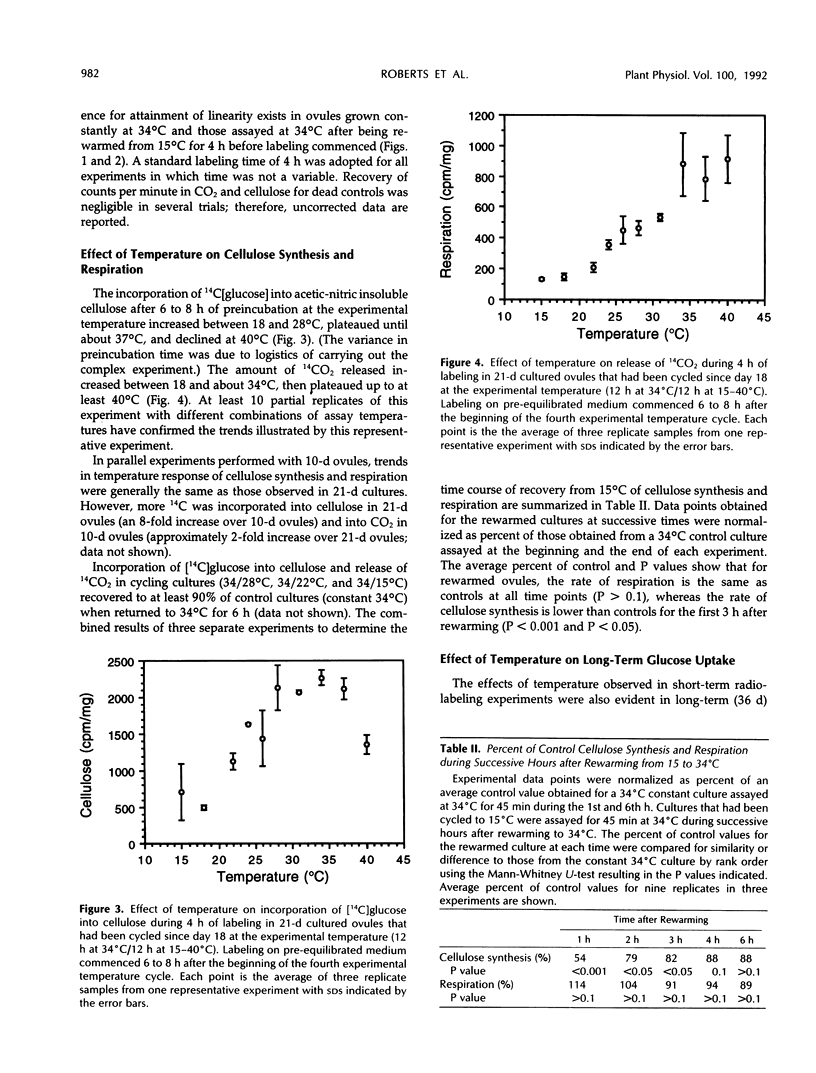
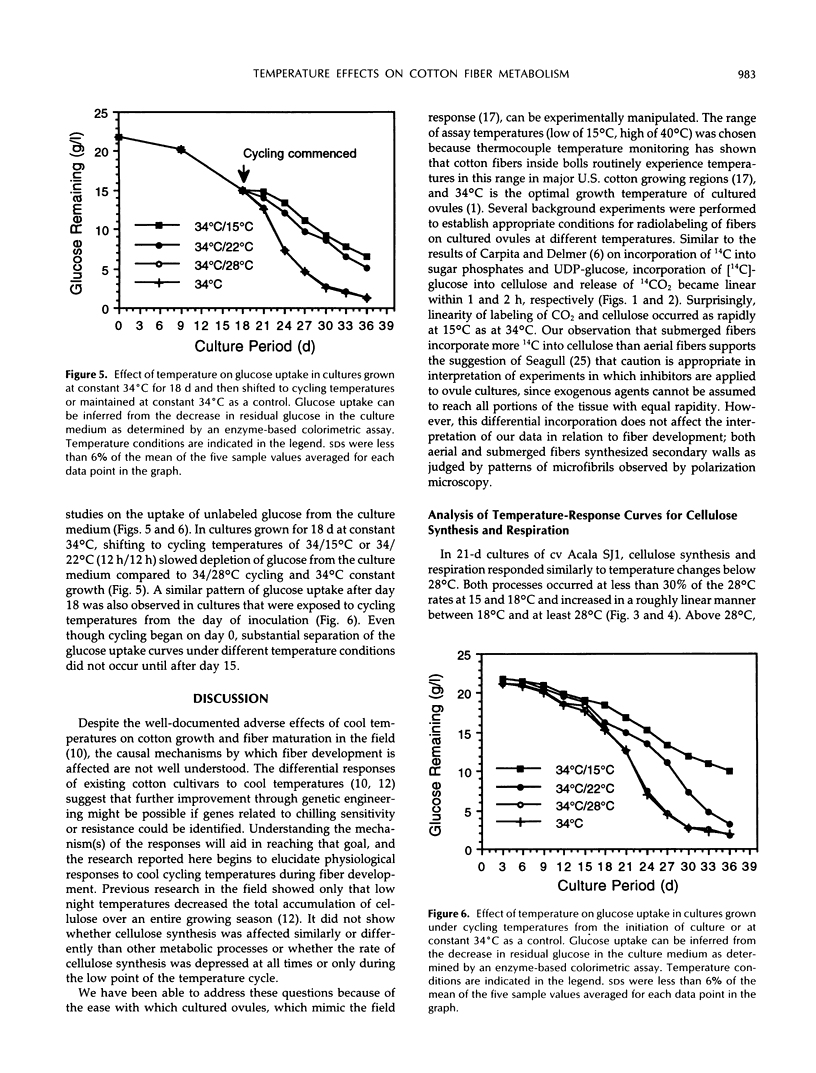
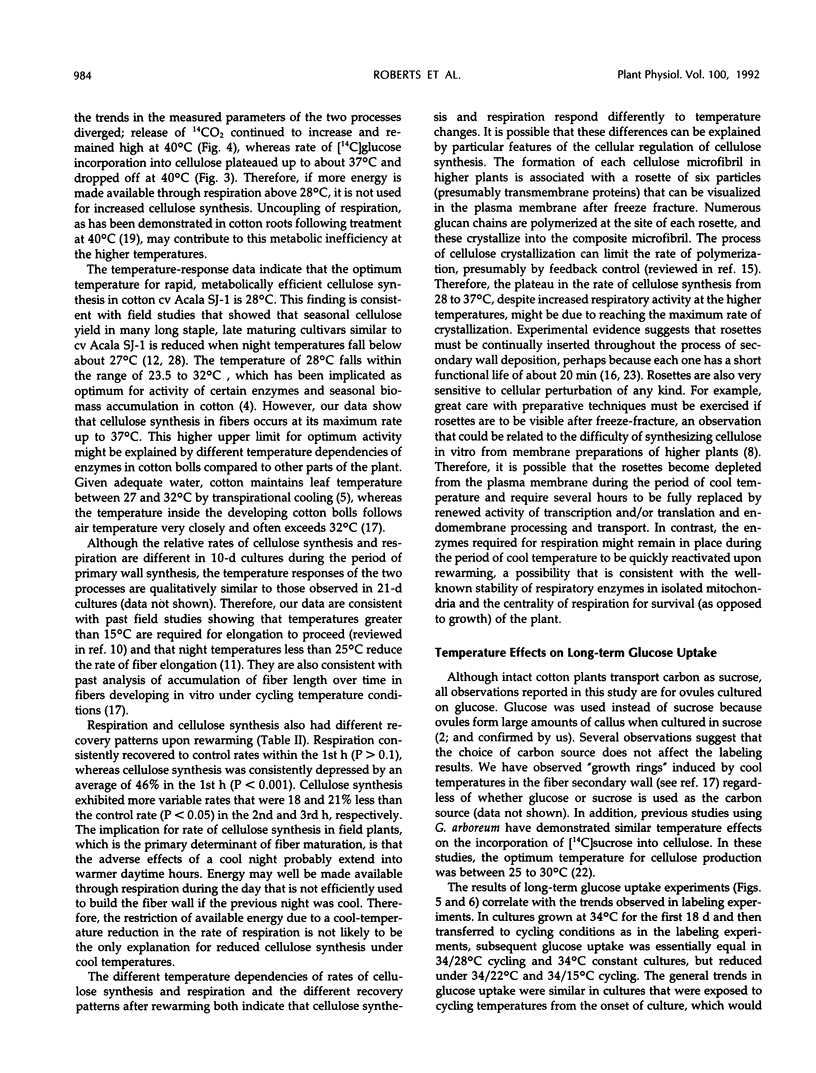
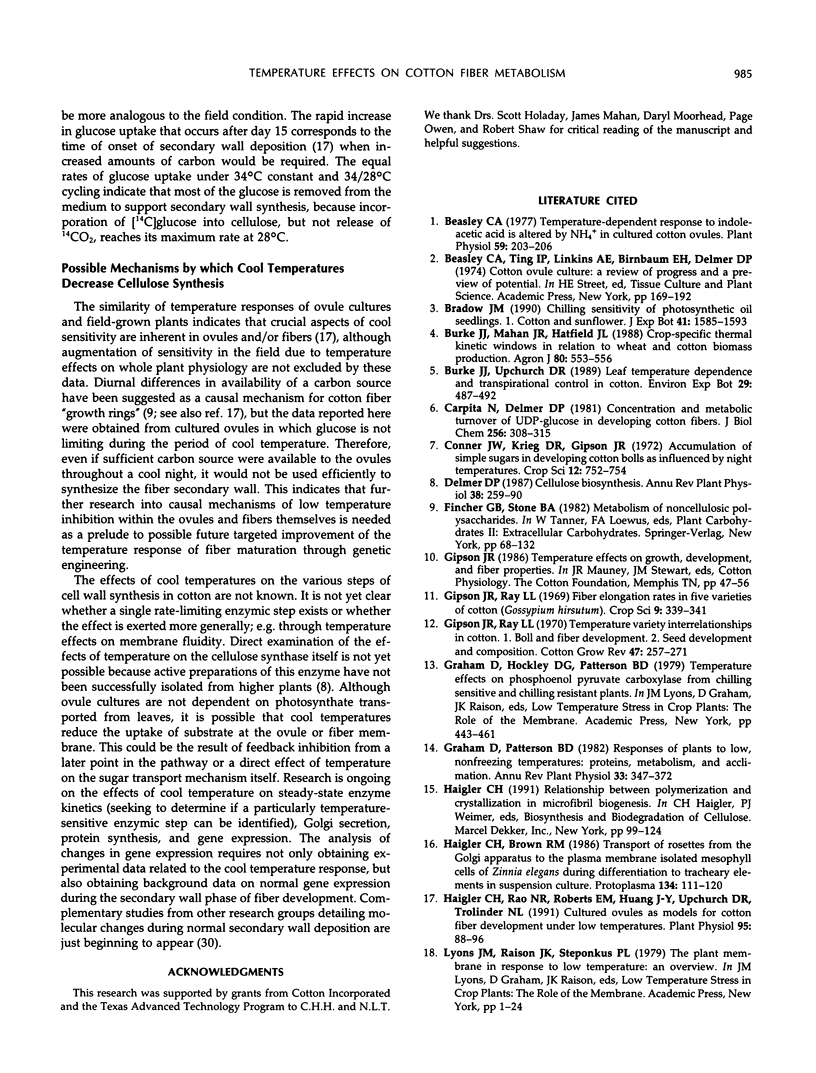

Selected References
These references are in PubMed. This may not be the complete list of references from this article.
- Amor Y., Mayer R., Benziman M., Delmer D. Evidence for a cyclic diguanylic acid-dependent cellulose synthase in plants. Plant Cell. 1991 Sep;3(9):989–995. doi: 10.1105/tpc.3.9.989. [DOI] [PMC free article] [PubMed] [Google Scholar]
- Beasley C. A. Temperature-dependent Response to Indoleacetic Acid Is Altered by NH(4) in Cultured Cotton Ovules. Plant Physiol. 1977 Feb;59(2):203–206. doi: 10.1104/pp.59.2.203. [DOI] [PMC free article] [PubMed] [Google Scholar]
- Carpita N. C., Delmer D. P. Concentration and metabolic turnover of UDP-glucose in developing cotton fibers. J Biol Chem. 1981 Jan 10;256(1):308–315. [PubMed] [Google Scholar]
- Haigler C. H., Rao N. R., Roberts E. M., Huang J. Y., Upchurch D. R., Trolinder N. L. Cultured Ovules as Models for Cotton Fiber Development under Low Temperatures. Plant Physiol. 1991 Jan;95(1):88–96. doi: 10.1104/pp.95.1.88. [DOI] [PMC free article] [PubMed] [Google Scholar]
- John J. B., Christiansen M. N. Inhibition of linolenic Acid synthesis and modification of chilling resistance in cotton seedlings. Plant Physiol. 1976 Feb;57(2):257–259. doi: 10.1104/pp.57.2.257. [DOI] [PMC free article] [PubMed] [Google Scholar]
- Updegraff D. M. Semimicro determination of cellulose in biological materials. Anal Biochem. 1969 Dec;32(3):420–424. doi: 10.1016/s0003-2697(69)80009-6. [DOI] [PubMed] [Google Scholar]


